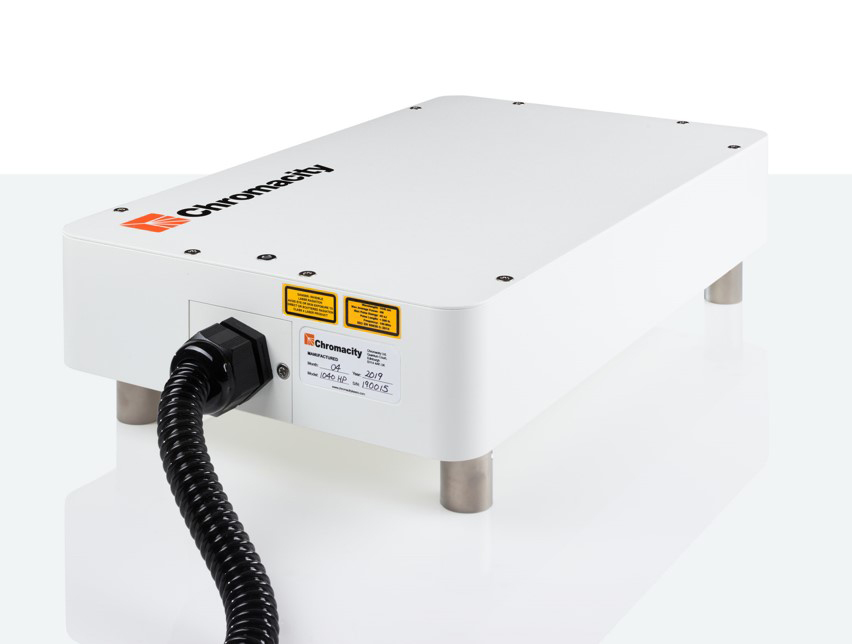Chromacity’s stable fibre laser enables enhanced supercontinuum generation for medical imaging
Edinburgh-based laser manufacturer Chromacity Ltd has demonstrated that its Model 1040 ultrafast fibre laser can generate exceptionally broad and flat supercontinua in the near-infrared region, spanning 750-1300 nm. The development has significant implications for medical imaging and spectroscopy applications.
Enhanced coupling efficiency
The key advantage of the system lies in its coupling efficiency. Unlike traditional solid-state lasers that typically produce elliptical beam profiles, the Chromacity 1040 delivers output from a single-mode fibre, resulting in perfectly symmetric beams. This symmetry enables coupling into photonic-crystal fibres with efficiencies exceeding 75%, a crucial factor for clinical and research applications.
Applications in medical diagnostics
The system’s ability to generate broadband near-infrared light through non-linear fibre interactions offers particular advantages for several medical diagnostic techniques, including:
• Optical coherence tomography
• CARS spectroscopy and microscopy
• Advanced spectroscopic analysis
The laser’s design focuses on practical clinical implementation, featuring air-cooling and maintenance-free operation – important considerations for medical facilities and research laboratories where consistent, reliable performance is essential.
Technical specifications
The Model 1040 operates as a fixed wavelength femtosecond laser source, delivering ultrashort pulses with high average powers in the near infrared spectrum. The system employs a patented laser architecture that ensures ultra-stable long-term performance, crucial for consistent diagnostic imaging and spectroscopic applications.
The company also produces complementary systems operating at 920 nm and tuneable picosecond OPO lasers covering near to mid-infrared wavelengths (1.4-12 µm), providing flexibility for various biomedical applications.
Practical implementation
The system has been designed with clinical practicality in mind, requiring no specialist support for operation. Its compact footprint and straightforward user interface make it suitable for both research laboratories and clinical settings where space and technical expertise may be limited.
The company has released a technical note detailing the implementation of supercontinuum generation in non-linear fibres, aimed at researchers and clinicians interested in cost-effective broadband near-infrared light generation.
For more information, visit: https://chromacitylasers.com/ultrafast-lasers/chromacity-1040
Digital issue: Please click here for more information





